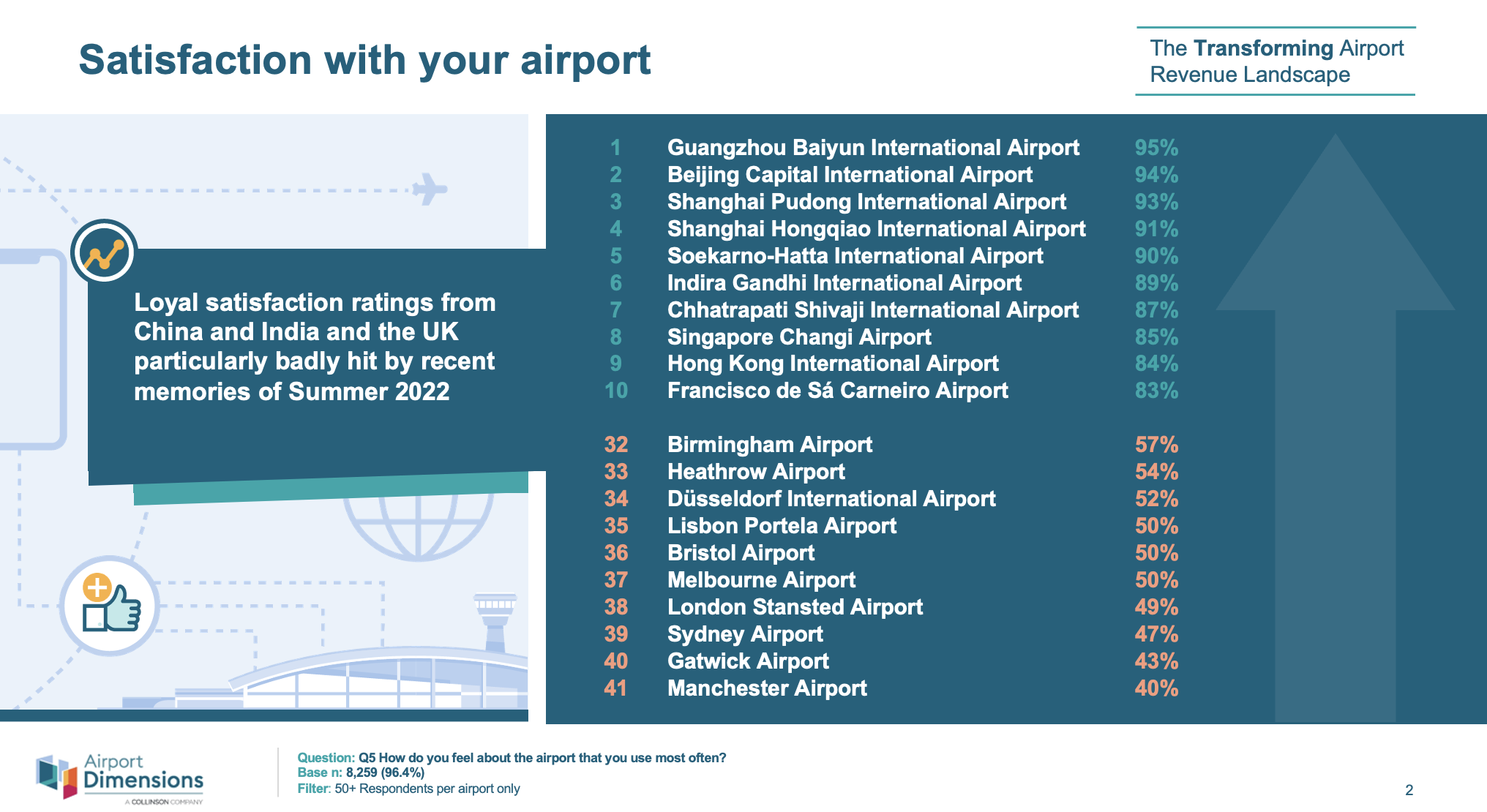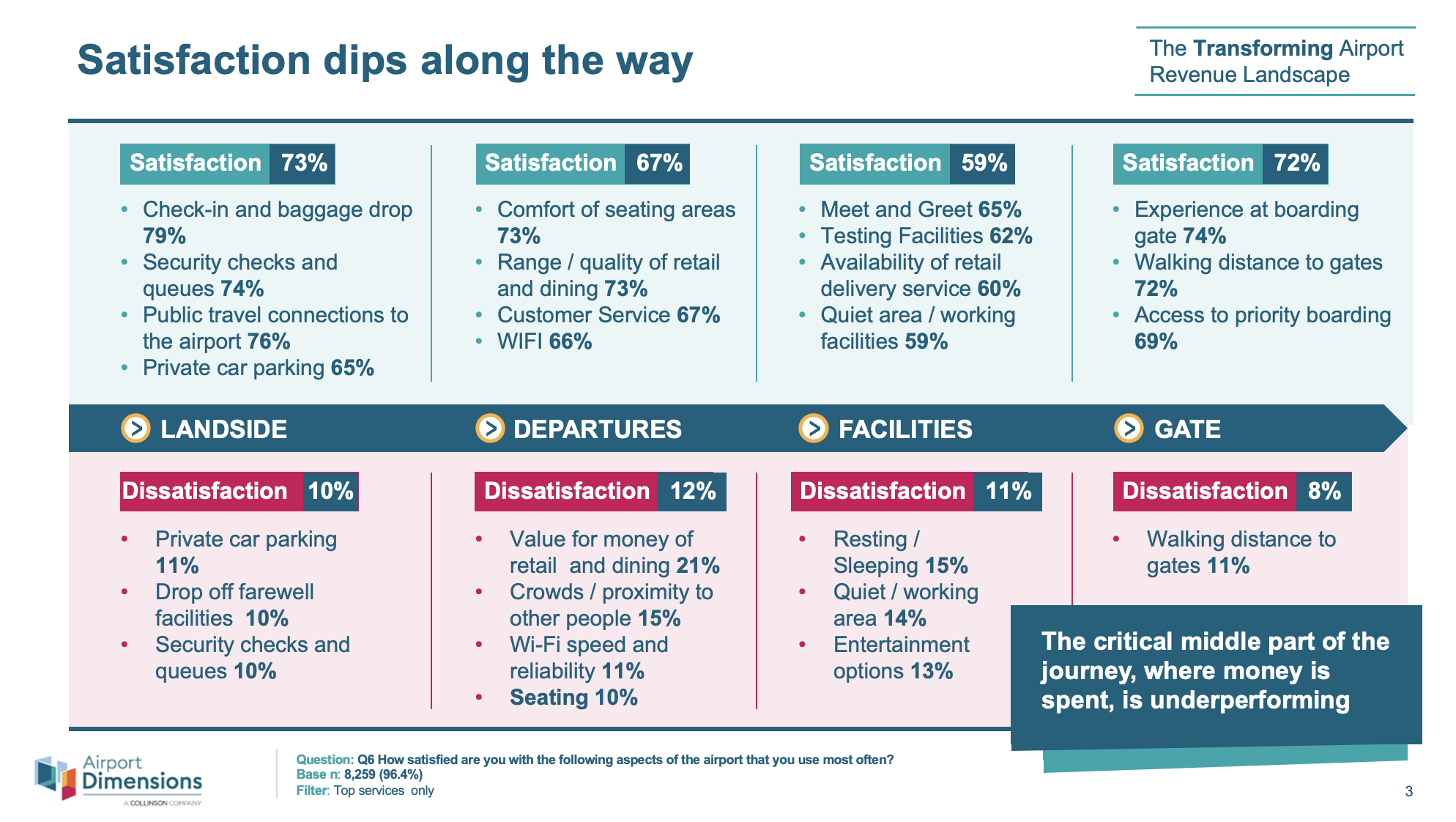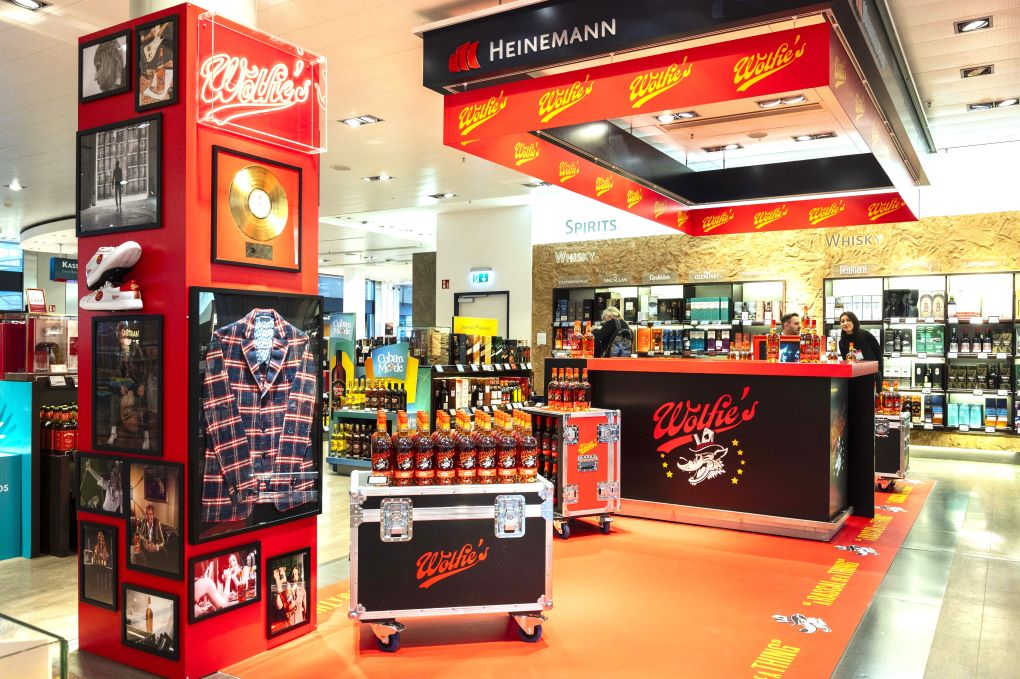Travel hospitality and services group Airport Dimensions has launched a series of reviews into consumer trends in the airport, to be released in partnership with The Moodie Davitt Report. Here, Global Strategy Director Stephen Hay introduces the series and addresses how travellers view the airport experience today.
The reinvented airport
In the eight years that Airport Dimensions has been running its Airport Experience research project, it’s not unreasonable to say that the experience passengers want from an airport and the revenue landscape within those airports has been transformed almost beyond recognition, writes Stephen Hay.
The findings of its latest study, which took place earlier this autumn and questioned over 8,500 travellers, has shown, unsurprisingly, that the pace of change over the past year has ramped up at an even greater speed. In this, the first of a series of reviews to be published in partnership with The Moodie Davitt Report, we’ll be taking a closer look at the emerging trends the data highlights.

To start with a positive finding – as we put some of the horrors of overcrowding and logistical problems that marred the initial return to travel behind us – more passengers are satisfied with the airport experience.
Nearly three quarters (71%) of airport passengers said they enjoy their time at the airport, an increase compared to the 2021 figure. Satisfaction is highest in Asia, where among rapidly developing economies shiny new airports are the standard and attitudes to travel are generally enthusiastic.
The study found 92% of passengers in China, 85% in both Indonesia and Hong Kong, and 83% in India and Singapore rate their experience as enjoyable. In contrast, European airports, often burdened with ageing architecture, tended not to impress, with just 56% of German airport passengers and 50% of UK passengers rating their experience positively.
Crucially, continuing a pattern seen in last year’s survey, satisfaction continues to dip in the all-important middle part of the journey. Satisfaction with the landside part of the journey sits at a healthy 73%, with facilities such as car parking rated up to par by 65%, check-in and baggage drop by 79% and security checks and queues by 74%.
A less impressive 67% is satisfied with what is on offer in the departures areas, with 73% saying they were happy with the comfort of seating areas, and the same number with the range and quality of retail and dining.
It’s also concerning that a small but significant 12% say they are actually dissatisfied with what’s going on in departures, with 21% unhappy about the value for money of retail and dining, and 11% disgruntled with the speed and reliability of wi-fi.

There is a missed opportunity here, as airports are continuing to fall down exactly when and where passengers are most likely to spend, and should be at their happiest.
The way passengers spend their time at the airport has evolved and the amount of time they spend there is longer. A significant 71% now usually eat at the airport, and as an average of all the time passengers spend at an airport, 17% is whiled away in bars and restaurants.
Over two thirds (69%) shop, with the average time that goes on shopping a not-insubstantial 13 minutes. The same number (69%) go online. All of these are activities that generate revenue, or have the potential to generate revenue, and over a third of the time (35%), passengers spend at airports is spent on these activities. There are notable differences in how the generations use their time at the airport. While elders spend an average of 1% of their time at the airport sleeping, and boomers 2%, Gen Z are tempted to a nap for 9% of their time at the terminal. Similarly, while elders like to shop for an average of 8% their time at the airport, this figure rises to 13% of the time of millennials.
There are notable differences in how the generations use their time at the airport. While elders spend an average of 1% of their time at the airport sleeping, and boomers 2%, Gen Z are tempted to a nap for 9% of their time at the terminal. Similarly, while elders like to shop for an average of 8% their time at the airport, this figure rises to 13% of the time of millennials.
Unsurprisingly, younger people go online, but the gap is marked with Gen Z and millennials passing 14% of their time using online media or gaming, compared to just 9% of the time of boomers and 5% of elders.
So, the lessons are clear. A new generation of travellers is impressed by different things, does different things, and wants different things when at the airport. They want to spend their money in different ways. Airports need to understand this shift to support and inform their reinvention for the coming era.
Note: The Moodie Davitt Report has launched a publication titled Airport Consumer Experience, in association with Airport Dimensions, dedicated to airport guest services and experiences.
To subscribe free of charge please email Kristyn@MoodieDavittReport.com headed ‘Airport Customer Experience’. All stories are permanently archived on the Airport Consumer Experience page on this website.











